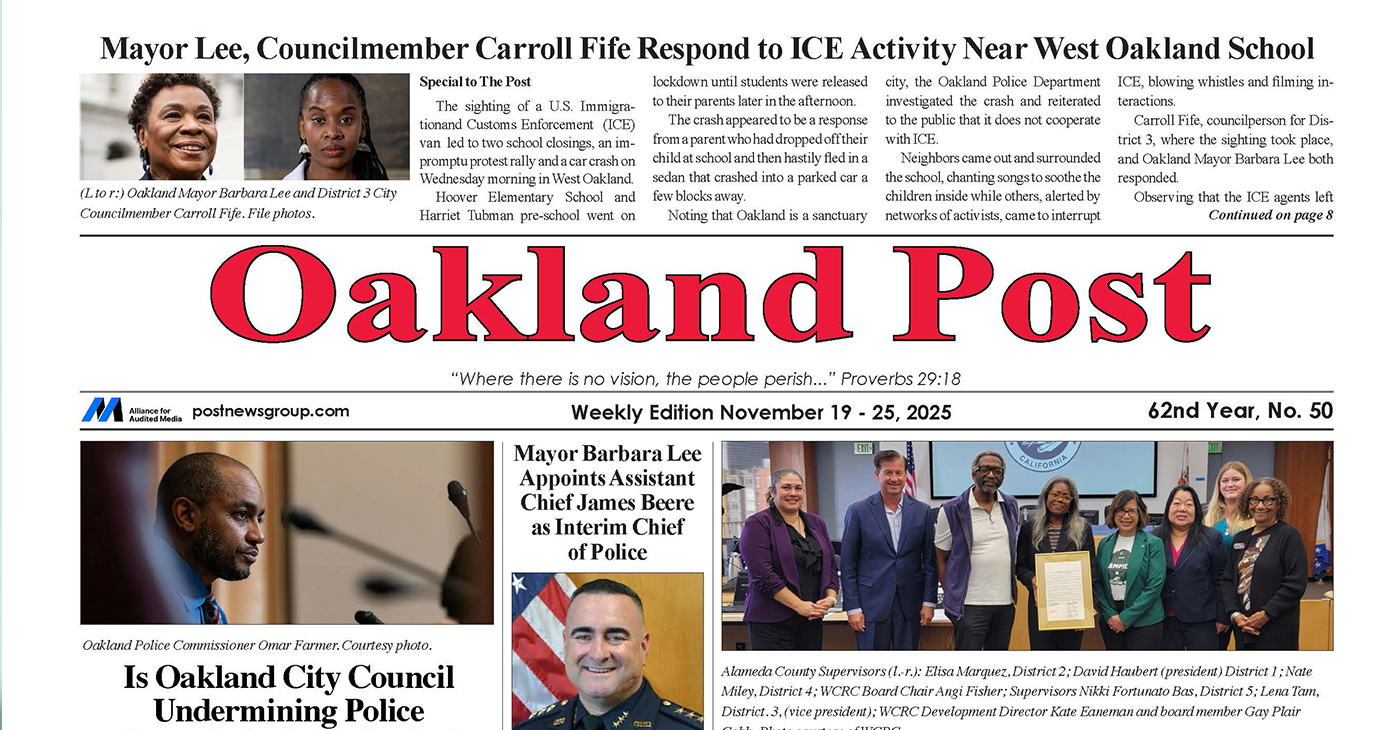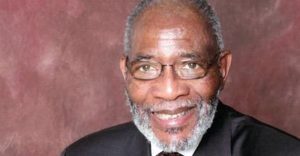Black History
COMMENTARY: The Debt We Owe Haitians
THE AFRO — Even though Haitians shed blood for American independence, the United States in its foreign policy has always held a deep-seated hostility towards Haiti,
By Oscar H. Blayton
More than 500 Haitian soldiers (referred to as Les Chasseurs-Volontaires de Saint-Domingue) fought alongside French troops, Oct. 9, 1779, to aid the Americans in trying to force the British out of Savannah, Ga. in order to open its port for the colonists’ use. The attack was unsuccessful, but it has been noted that the Haitians played a significant role in providing cover for the French soldiers who had to retreat from their positions on the battlefield. But even though Haitians shed blood for American independence, the United States in its foreign policy has always held a deep-seated hostility towards Haiti, despite denials to the contrary.

[/media-credit] Oscar H. Blayton
Haiti was born of a slave revolt that began on the French half of the island of Hispaniola and resulted in a revolution costing 200,000 Black lives.
When the Haitians threw off the French yoke of oppression to become the Independent Republic of Haiti, France demanded recompense for the loss of its slaves. This demand for payment was backed up by the threat of an invasion, with the French navy laying off the Haitian coast. This forced payment, totaling more than $21 billion over the years, began Haiti’s slide from being France’s wealthiest colony to one of the poorest nations in the Western Hemisphere.
When Haiti gained its independence, Southern slaveholders in the United States were horrified by the liberation of enslaved Black people by their own efforts. And in response, the U.S. government did not recognize the Black nation until 1862, when the United States was in the throes of its own brutal and bloody war over the perpetuation of slavery and the Southern states had seceded from the Union.
But recognition never meant respect. And ever since its creation, Haiti has had to battle against American hostility, with the United States keeping its heel on Haiti’s economy and domestic politics. This included a U.S. invasion in 1914 that precipitated a military occupation lasting until 1934.
The U.S. military occupied Haiti again in 1994, the year Haiti’s democratically elected president, Jean-Bertrand Aristide, returned from exile after fleeing from a coup by the Haitian military. When Aristide was re-elected in 2000, the U.S. military, in combination with the Haitian military, forcibly removed him from the country and sent him into exile again, this time in South Africa.
It is important to point out the irony of how badly the United States has treated Haiti, given the presence of a statue standing in Savannah’s Franklin Square. This statue was erected in 2007 to honor the Haitian soldiers that came to the aid of American revolutionaries 240 years ago in 1779.
But this statue is not the first recognition of America’s debt to Haitians. In April 1944, President Franklin D. Roosevelt had Secretary of State Cordell Hull deliver a commemorative plaque to a cathedral in Haiti that reads, “Today we pay tribute to the courage and spirit of those Haitian Volunteers who in 1779 risked their lives for the cause of American Liberty.” The placement of Roosevelt’s plaque and the assistance given by the Haitians is unknown to most Americans. And even a 10-foot monument in a busy downtown square of a major U.S. city does not bring this piece of our history to the attention of most Americans.
Haiti’s contributions to the United States are not widely known because, throughout our country’s history, America has shown itself to be hostile towards Haiti and Haitians.
On Oct. 30, 2018, the British newspaper, The Guardian, ran the headline, “Flee or hide: Haitian immigrants face difficult decisions under Trump.” This headline, curious to most Americans, has a backstory. After a 7.1-magnitude earthquake hit Haiti in 2010, the U.S. government offered Temporary Protected Status (TPS) to thousands of Haitians whose lives had been destroyed. But now, Donald J. Trump has decided that their imminent deportation is best for America. Haitians who have made new lives in this country are now on the verge of becoming “illegal aliens” by the stroke of Trump’s pen.
But a monster like Trump has neither empathy for, nor any sense of obligation to, people of color whose ancestors helped to birth and build this nation. People of color can expect no consideration from this despicable, disgusting bully who wants to “make America white again.”
The White House also is planning to terminate TPS for people of color from other countries whose conditions have necessitated our compassion and offers of refuge because hostility towards Haitians is simply a part of the pattern of widespread American hostility towards people of color. Just as ancient barbaric people created narratives that gave animals human form and characteristics in an anthropomorphic attempt to conform them to the familiar, Trump and his supporters are pursuing a “europomorphic” attempt to mold America into a European form that is familiar to them. In short, he is attempting to make all Americans look as much like European Americans as possible. As ancient barbarians wanted to conform their world to their own image, these present-day barbarians want to conform America to their own image.
It is up to right-thinking Americans to stand up to Trump and the cynical, cowardly senators and congressional representatives who cater to his attempts at despotism. It is time to stand up and say “No!” to the deportation of Haitians and others living in the United States with Temporary Protected Status.
We must have compassion for our fellow human beings, even if the disgusting tenant in the White House does not.
Oscar H. Blayton is a former Marine Corps combat pilot and human rights activist who practices law in Virginia.
The opinions on this page are those of the writers and not necessarily those of the AFRO.Send letters to The Afro-American • 1531 S. Edgewood St. Baltimore, MD 21227 or fax to 1-877-570-9297 or e-mail to editor@afro.com.
This article originally appeared in The Afro.
Activism
Oakland Post: Week of November 26 – December 2, 2025
The printed Weekly Edition of the Oakland Post: Week of November 26 – December 2, 2025

To enlarge your view of this issue, use the slider, magnifying glass icon or full page icon in the lower right corner of the browser window.
Activism
Oakland Post: Week of November 19 – 25, 2025
The printed Weekly Edition of the Oakland Post: Week of November 19 – 25, 2025

To enlarge your view of this issue, use the slider, magnifying glass icon or full page icon in the lower right corner of the browser window.
Activism
IN MEMORIAM: William ‘Bill’ Patterson, 94
Bill devoted his life to public service and education. In 1971, he became the founding director for the Peralta Community College Foundation, he also became an administrator for Oakland Parks and Recreation overseeing 23 recreation centers, the Oakland Zoo, Children’s Fairyland, Lake Merritt, and the Henry J. Kaiser Convention Center.

William “Bill” Patterson, 94, of Little Rock, Arkansas, passed away peacefully on October 21, 2025, at his home in Oakland, CA. He was born on May 19, 1931, to Marie Childress Patterson and William Benjamin Patterson in Little Rock, Arkansas. He graduated from Dunbar High School and traveled to Oakland, California, in 1948. William Patterson graduated from San Francisco State University, earning both graduate and undergraduate degrees. He married Euradell “Dell” Patterson in 1961. Bill lovingly took care of his wife, Dell, until she died in 2020.
Bill devoted his life to public service and education. In 1971, he became the founding director for the Peralta Community College Foundation, he also became an administrator for Oakland Parks and Recreation overseeing 23 recreation centers, the Oakland Zoo, Children’s Fairyland, Lake Merritt, and the Henry J. Kaiser Convention Center.
He served on the boards of Oakland’s Urban Strategies Council, the Oakland Public Ethics Commission, and the Oakland Workforce Development Board.
He was a three-term president of the Oakland branch of the NAACP.
Bill was initiated in the Gamma Alpha chapter of Kappa Alpha Psi Fraternity.
In 1997 Bill was appointed to the East Bay Utility District Board of Directors. William Patterson was the first African American Board President and served the board for 27 years.
Bill’s impact reached far beyond his various important and impactful positions.
Bill mentored politicians, athletes and young people. Among those he mentored and advised are legends Joe Morgan, Bill Russell, Frank Robinson, Curt Flood, and Lionel Wilson to name a few.
He is survived by his son, William David Patterson, and one sister, Sarah Ann Strickland, and a host of other family members and friends.
A celebration of life service will take place at Henry J. Kaiser Convention Center (Calvin Simmons Theater) on November 21, 2025, at 10 AM.
His services are being livestreamed at: https://www.facebook.com/events/1250167107131991/
In lieu of flowers, donations can be made to the Euradell and William Patterson scholarship fund TBA.

-

 Activism4 weeks ago
Activism4 weeks agoOakland Post: Week of November 12 – 18, 2025
-

 Activism3 weeks ago
Activism3 weeks agoIN MEMORIAM: William ‘Bill’ Patterson, 94
-

 Activism4 weeks ago
Activism4 weeks agoHow Charles R. Drew University Navigated More Than $20 Million in Fed Cuts – Still Prioritizing Students and Community Health
-

 Bay Area4 weeks ago
Bay Area4 weeks agoNo Justice in the Justice System
-

 #NNPA BlackPress3 weeks ago
#NNPA BlackPress3 weeks agoLewis Hamilton set to start LAST in Saturday Night’s Las Vegas Grand Prix
-

 #NNPA BlackPress3 weeks ago
#NNPA BlackPress3 weeks agoBeyoncé and Jay-Z make rare public appearance with Lewis Hamilton at Las Vegas Grand Prix
-

 Activism3 weeks ago
Activism3 weeks agoOakland Post: Week of November 19 – 25, 2025
-

 #NNPA BlackPress4 weeks ago
#NNPA BlackPress4 weeks agoThe Perfumed Hand of Hypocrisy: Trump Hosted Former Terror Suspect While America Condemns a Muslim Mayor




















































